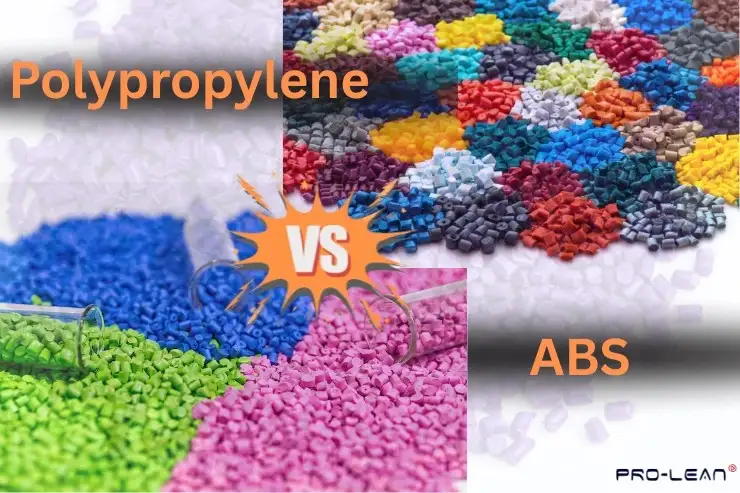
Polypropylene vs ABS plastic granules comparison
Among injection molding materials, the two you’ve had to choose from are ABS or Polypropylene. Both materials are common thermoplastics, but for varied applications.
Choosing one over the other may offer particular advantages in one application, while failing to do so in another. Whether to bring in consumer goods, automotive components, or packaging, the choice of material can significantly impact the performance and cost-effectiveness of the product.
There are no simple plastics; they are indeed advanced materials with diverse applications across various industries. Injection-moulded products account for over 80% of components worldwide, including those used in electronics, medical devices, and automotive manufacturing. Misuse of materials can lead to product failure, increased costs, and inefficiency in production.
ProleanTech is the go-to company for expert support in material selection, prototyping, and high-quality injection moulding services. We offer complete trust. From prototypes to production, we turn your design into precision-engineered parts.
So, without further delay, let’s dissect the concept of plastics and, ultimately, help you decide which one best suits your requirements.
What is ABS Material?
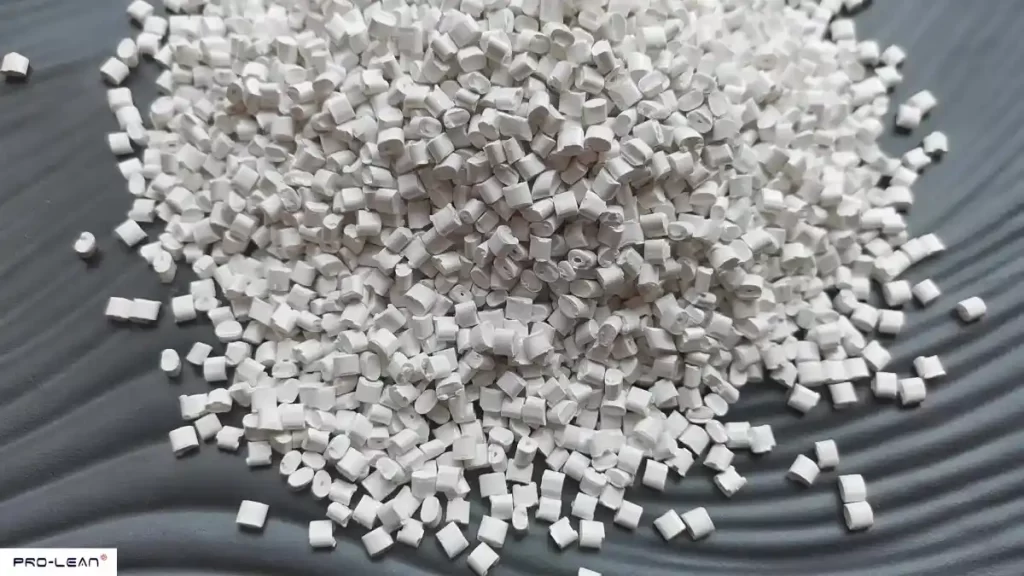
White ABS plastic granules
ABS is a standard plastic widely used across various industries. The plastic part lends it strength, while the rubber gives it toughness. ABS plastic properties are extensive, allowing it to be used in many products.
This polymer is superior because of its structural integrity, dimensional stability, and impact resistance at sub-zero temperatures. ABS is also easy to mold. Therefore, it is used in the injection molding industry.
Industry figures indicate that ABS produces approximately 10 million tons worldwide each year. Such demand is mainly attributed to the automotive and electronics industries. For instance, most of the electronic housing and interior car parts of the ABS-110 benefit highly from ABS’s rigidity and surface finish.
In addition, ABS is understood to be a very cost-effective material with a high aesthetic value, which can be attributed to its natural smooth sheen appearance. Thus, it provides an excellent painting, coating, and detailing surface.
What is Polypropylene Material?
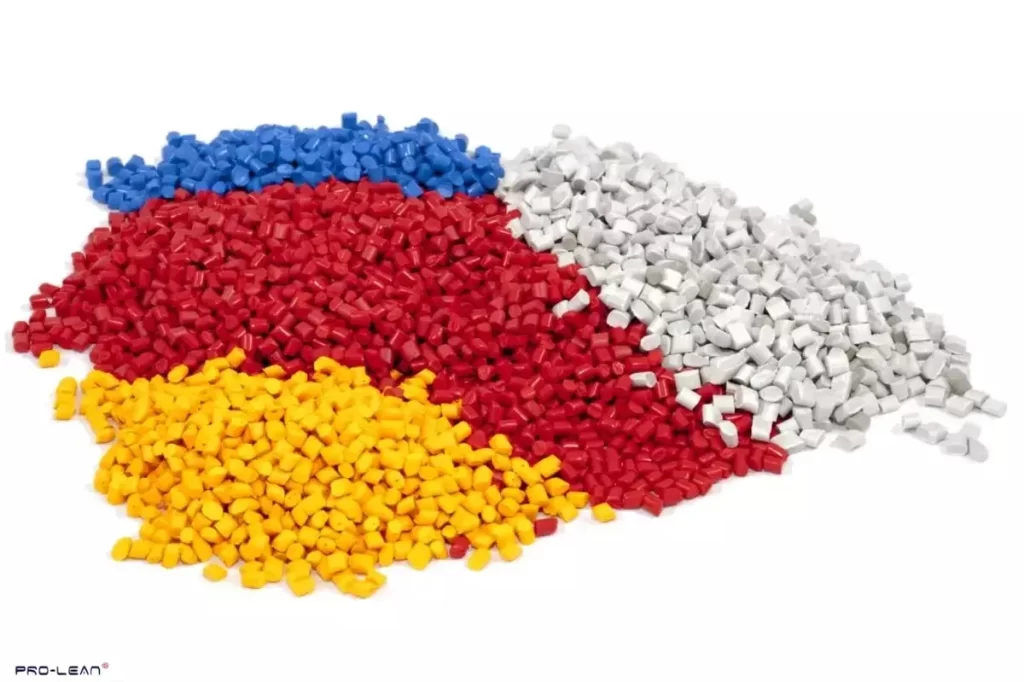
Colorful Polypropylene thermoplastic polymer granules
Polypropylene is a thermoplastic polymer primarily known for its low cost and moderate moisture and chemical resistance.
Polypropylene’s properties vary. It is derived from propylene monomers and is classified as a polyolefin. Its most important advantage is its very low weight and high flexibility. This highly recyclable material makes polypropylene the material of choice for various applications, from packaging to textiles and from automotive to medical devices.
It is particularly suitable for parts demanding flexibility and chemical resistance. It is in reusable containers, medical syringes, vehicle battery cases, and chairs. It is popular in injection moulding for polypropylene materials, such as 1300.
It has a relatively low density (approximately 0.90 g/cm³), good tensile strength, and exceptional impact resistance, particularly when incorporated into rubber blends.
Learn how injection molding works and its uses in various industries.
ABS vs Polypropylene: Key Differences
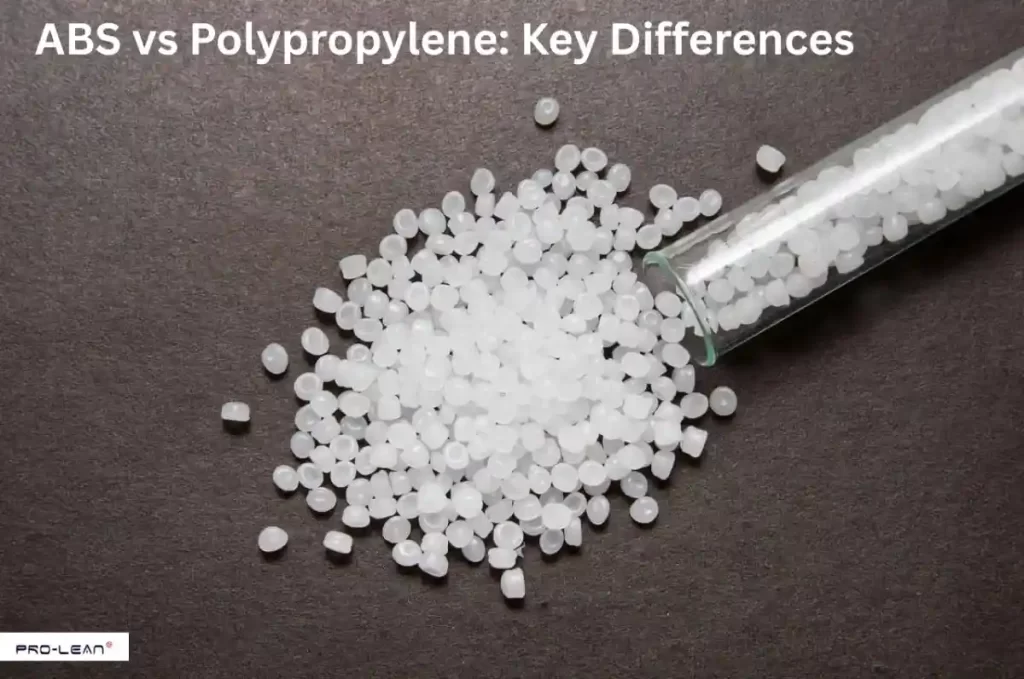
ABS vs Polypropylene: Key Differences
Understanding the critical differences between ABS and polypropylene is essential when selecting an injection moulding material. These two types are thermoplastics; however, their natural structures and intrinsic mechanical properties differ very much and, therefore, can hardly be substituted by one another.
The characteristics of ABS plastic primarily concern the product’s strength, hardness, and surface quality. The properties of the polypropylene material are chemical resistance, lightweight nature, and flexibility.
| Properties | ABS | Polypropylene |
| Density | 1.04 g/cm³ | 0.90 g/cm³ |
| Tensile Strength | ~45 MPa | ~30 MPa |
| Flexibility | Lower | Higher |
| Impact Resistance | High | Very High (when modified) |
| Temperature Resistance | Up to 100°C | Up to 80°C |
| Chemical Resistance | Moderate | Excellent |
| Cost | Moderate | Low |
| Finish | Glossy | Waxy, dull |
ABS is primarily used in applications with paramount rigidity, structural strength, and aesthetic appeal. Polypropylene is most suitable for applications that require flexibility and chemical resistance.
For a more technical comparison involving cost, complexity, and part design, especially when choosing between different fabrication methods, see our detailed breakdown: CNC Machining Vs Injection Molding: What are the Differences?
Try Prolean Now!
What Are the Applications of Polypropylene?
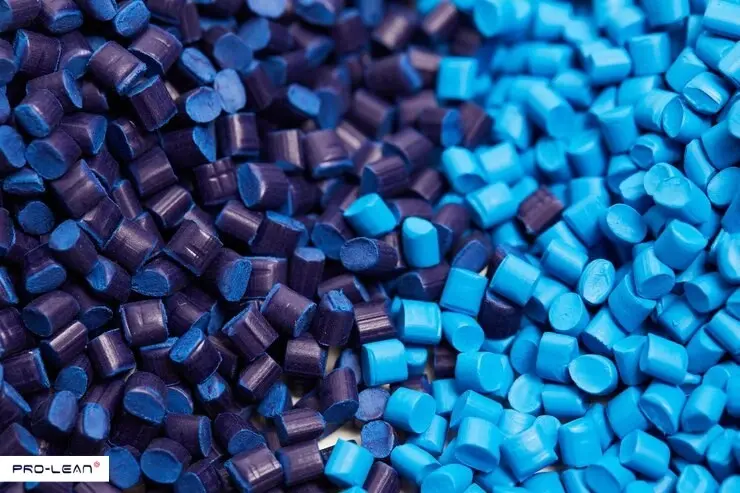
Polypropylene Granules for Manufacturing
Polypropylene’s uses extend far beyond packaging. It possesses the characteristics of resistance to chemical attack and fatigue, making it most useful in high-stress environments. The locations where you will find it include:
- Industrial piping systems that transport acids and alkalis
- Food-grade containers, due to their non-toxic nature
- Automotive parts such as dashboards and inner fender liners
- Medical devices like syringes and pill containers
Its resistive capacity to repeated flexion makes this a unique material. It features “living hinge” properties, making it suitable for applications such as flip-top bottle caps and folding boxes. Polypropylene plastic-480 is often chosen for objects subject to moisture and heat, although not at high temperatures.
Check out the Best Injection Moulding Material Guide or read up on advanced processes, such as the Understanding Teflon Injection Moulding Process, to better understand how they function. Prefer reliable sites like ProleanTech.
In-Depth Look: ABS in Manufacturing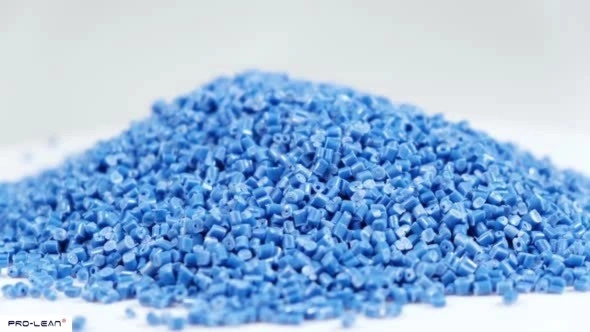
Blue ABS Plastic Pellets for Manufacturing
Strength, durability, and cosmetic appeal are all areas where ABS excels. It is typically used on parts that require a high surface finish, aesthetic appeal, strength, and precision. Common applications include:
- Automotive components like grilles, panels, and trims
- Consumer electronics such as laptops and keyboards
- LEGO bricks and other durable toys
The best ABS-70-type features include improved impact resistance and UV stabilization for demanding applications. Although ABS is heavier and more expensive than polypropylene, its strength and formability generally make the costs worthwhile.
ABS Plastic Chemical Structure
ABS plastic’s chemical structure involves three monomers: acrylonitrile, butadiene, and styrene. They are responsible for the distinctive attributes of ABS.
A few key properties attributed to acrylonitrile, butadiene, and styrene are chemical resistance, toughness, processability, and gloss. The performance of this tri-polymer design makes ABS an exceptional polymer for demanding environments where strength and resilience are essential.
ABS Vs. Polypropylene: Comparing Processing Techniques
While both ABS and polypropylene exhibit excellent molding characteristics for injection molding, their conditions differ. In particular, ABS requires slightly higher mold temperatures- new temperature conditions of around 60-80°C and processing temperatures of around 200-250°C.
Polypropylene, however, moulds at lower temperatures of 40-60°c, while requiring slightly higher melt temperatures of 220-280°c for optimal performance during moulding.
ABS tends to shrink less (around 0.4–0.7%), while PP may shrink by up to 2%. This makes ABS preferable in applications demanding high-dimensional accuracy.
Cost-Efficiency in Production
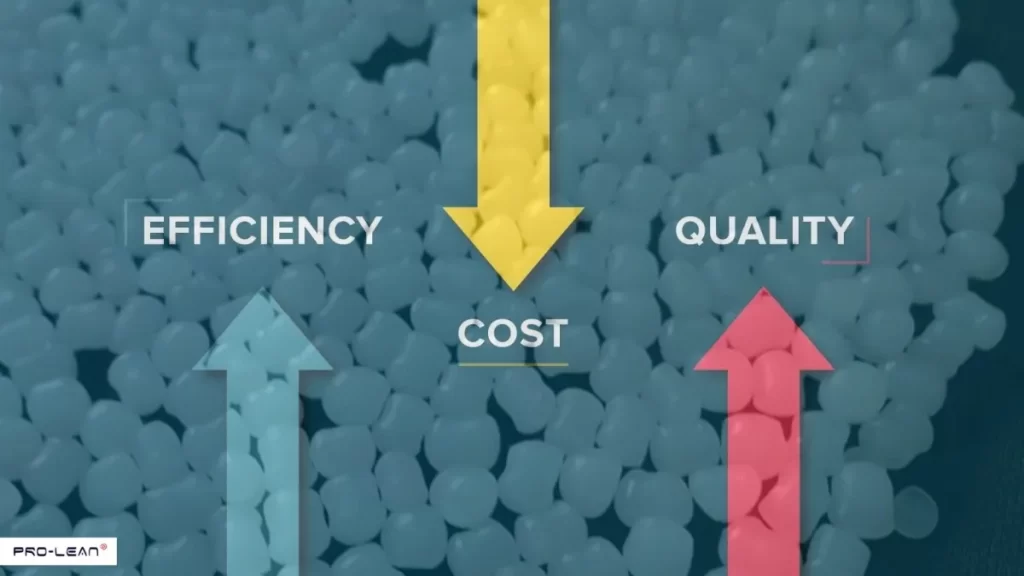
Balancing Efficiency, Quality, and Cost
Cost is among the most critical factors in manufacturing. Generally speaking, polypropylene is less expensive than ABS. ABS prices vary with quality, ranging from $1.2 to $2.0 per kg, whereas PP prices range from $0.9 to $1.5 per kg. In mass production, especially in the low-cost method, polypropylene wins outright.
When reducing production costs, companies often optimise their costs by working with Chinese injection-moulding suppliers, where materials such as PP can be purchased in bulk at very low costs.
Find out how to Optimize Costs with China Injection Molding services.
Environmental Impact and Sustainability
Regarding environmental impact, both ABS and PP can be recycled, and Polypropylene is considered a more sustainable material. It requires less energy for production, thus emitting less carbon.
Although ABS can be recycled, its processing is more difficult due to the presence of a mixture of polymers. Additionally, many ABS composites have been coated, which increases the difficulty of recycling processes. Polypropylene is generally recognised as plastic number 5, whereas ABS does not have a recycling code and, therefore, lacks a means of reusability.
Try Prolean Now!
ProleanTech – Your Custom Parts Provider
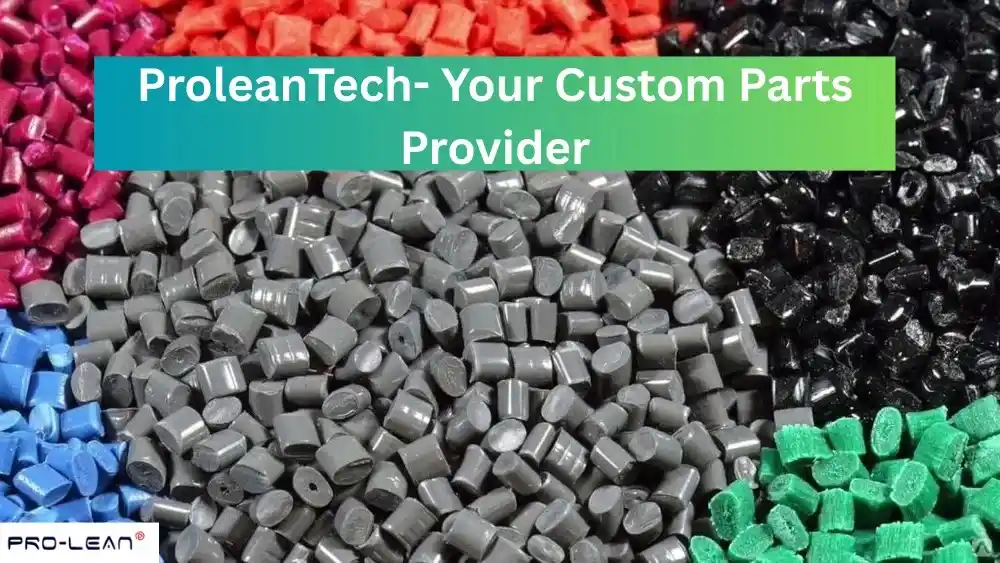
ProleanTech: Your Custom Parts Provider
It’s the manufacturing partner your team wants when precision and performance matter. ProleanTech delivers its custom parts, as defined by design, function, and budget, from the earliest prototyping stages to end production.
With an in-depth understanding of current manufacturing technologies and material behavior, they have mastered a range of processes, including injection molding, CNC machining, sheet metal fabrication, and 3D printing. ProleanTech treats every part as a combination of optimization to gain strength and efficiency, whether in metals, plastics, or composites.
A key aspect of their value is education on injection moulding. For example, how is the process carried out, and what is it used for? Injection molding is key in producing high-volume plastic components, emphasizing tight tolerances, good cosmetic finishes, and reproducibility.
ABS is the typical pick above all others when discussing absolute toughness with gloss; however, Polypropylene comes into play when flexibility and chemical resistance are needed.
Have questions or need help? Feel free to contact us or click ‘Quote’ to get started.
What sets ProleanTech apart:
- Expert design feedback and DFM (Design for Manufacturability) support
- Fast lead times and global delivery capabilities
- Wide material selection and in-house quality control
- Clear communication throughout every stage of production
ProleanTech is not just a service provider; it embodies a partnership in creating innovative ideas. Whether in the automotive, consumer products, medical devices, or industrial equipment sectors, they understand the demands of your industry and can build parts that meet or exceed those requirements.
ProleanTech ensures a custom-built part, from concept to creation, with precision, efficiency, and long-term reliability across the scope of automotive, consumer products, medical devices, and industrial equipment.
Want to know how ProleanTech supports clients with specialized needs? Explore a comprehensive guide to low volume injection molding to see how our small-batch solutions deliver big-time results.
Why Choose ProleanTech?
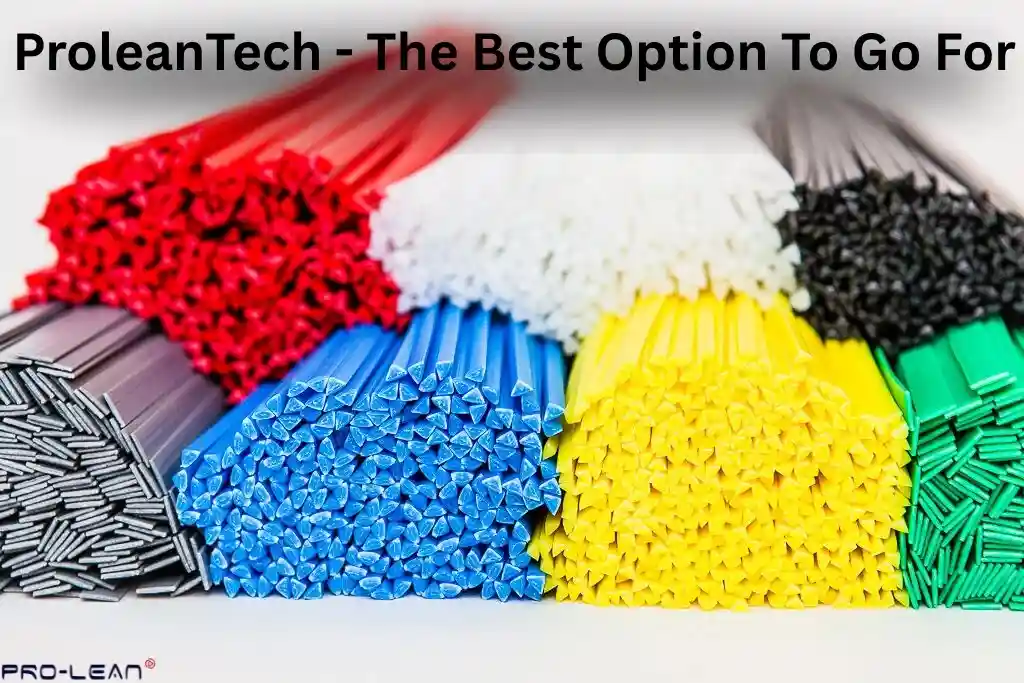
ProleanTech: The Best Option For You
ProleanTech understands that the material you choose can determine the success of your product. Whether you prototype an item in small batches or produce it on a large scale, our team is ready to help you identify the best-fit material.
We provide high-class injection molding services and exhaustively share industry knowledge.
Using various plastics and state-of-the-art molding equipment, we can customize parts to fit your technological specifications. Our experience with ABS plastic behaviour and polypropylene applications ensures you receive expert advice at every step.
- Expert support on material selection for your application
- Customized injection molding based on your technical specs
- Competitive pricing and high-quality finishes
- Full support for prototyping to mass production
Explore our Guide to the Best Injection Molding Materials or learn about the Understanding Teflon Injection Molding Process.
Wrap Up
Choosing the right material for your injection moulding project is crucial, affecting everything from production costs to product performance. Although ABS offers high strength, aesthetic appeal, and heat resistance, polypropylene provides chemical resistance, cost efficiency, and flexibility.
You may still be confused about which one is best for your project. But don’t worry! ProleanTech stands out as the best manufacturing partner because it combines extensive material expertise with advanced production proficiency.
If you’re unsure how each choice affects your bottom line, our complete guide to injection molding costs can help clarify total expenses from start to finish.
However, our engineers work closely with you to analyse your requirements, provide optimal material solutions, and implement efficient manufacturing processes according to your project.
Suppose you want the perfect balance between performance and cost-effectiveness, trust Proleantech’s professional injection moulding services. You can request a custom quote now!
FAQs
Q1. Which is better ABS or polypropylene?
Again, this depends on your needs: ABS has strength, rigidity, and excellent aesthetic finishes, while polypropylene is resistant to chemicals and relatively cheaper. Choose wisely according to your applications.
Q2. What are the disadvantages of polypropylene?
Adhesives don’t bond very well with Polypropylene, and they resist UV radiation. It withstands less heat, and its rigidity is also less than ABS. It may not be suitable for structures or parts that require high temperatures.
Q3. Which luggage material is best?
ABS outperforms in terms of strength and looks. Polypropylene is the best choice for lightweight, flexible, or impact-resistant luggage.
Q4. What is better than polypropylene?
Depending on the application, certain materials such as ABS, nylon, polycarbonate, or pure Teflon may be superior in strength, temperature resistance, or chemical properties.
Q5. What is polypropylene material?
A thermoplastic polymer derived from propylene monomers, widely used due to its chemical resistance, flexibility, and price.
Q6. What is polypropylene made of?
Polypropylene is produced through the polymerisation of propylene using a catalyst. It is a versatile and durable plastic.
Q7. What is ABS material used for?
ABS is widely used in applications such as automotive parts, electronic components, children’s toys like LEGO bricks, and the housings of various tools. All these applications concerning ABS derive from its durability and finish.
Q8. How can you tell ABS from polypropylene?
ABS from polypropylene by looking at appearance (ABS is glossy, PP is waxy/dull), weight (PP is lighter), and flexibility (PP bends more easily than the rigid ABS).
Q9. What is better than polypropylene?
Better alternatives to polypropylene depend on the application. ABS offers better strength and appearance, nylon provides higher durability, polycarbonate has superior heat resistance, and Teflon excels in chemical resistance.

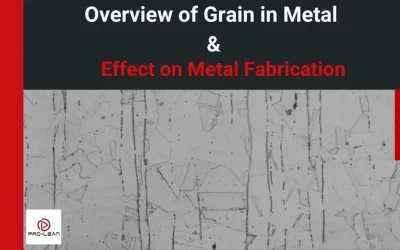
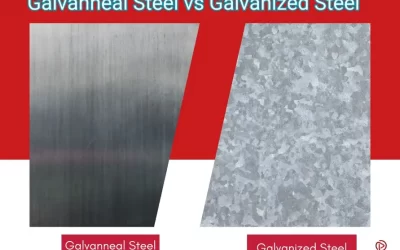
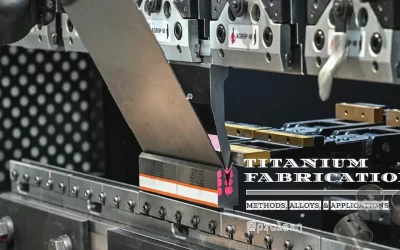
0 Comments